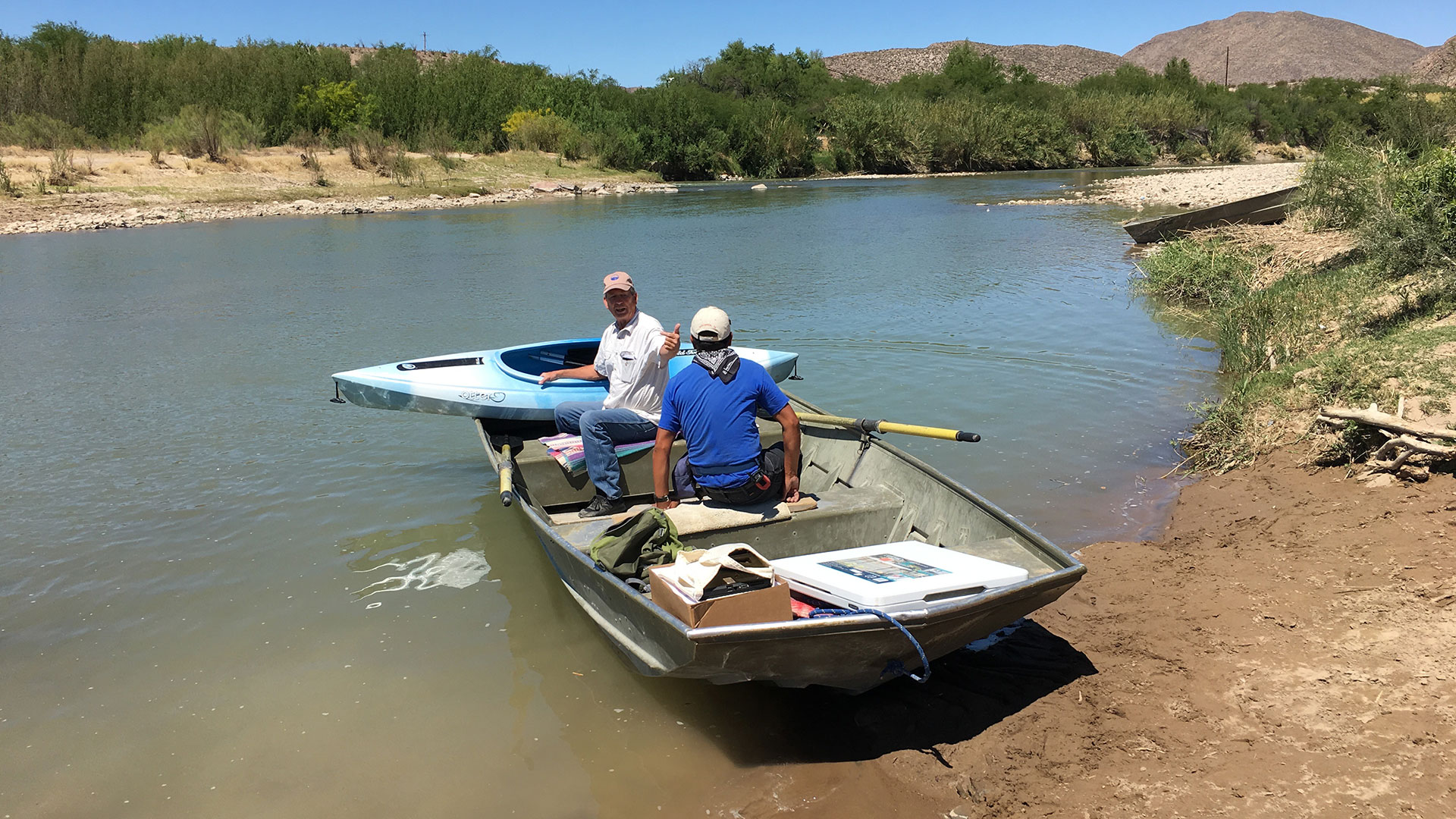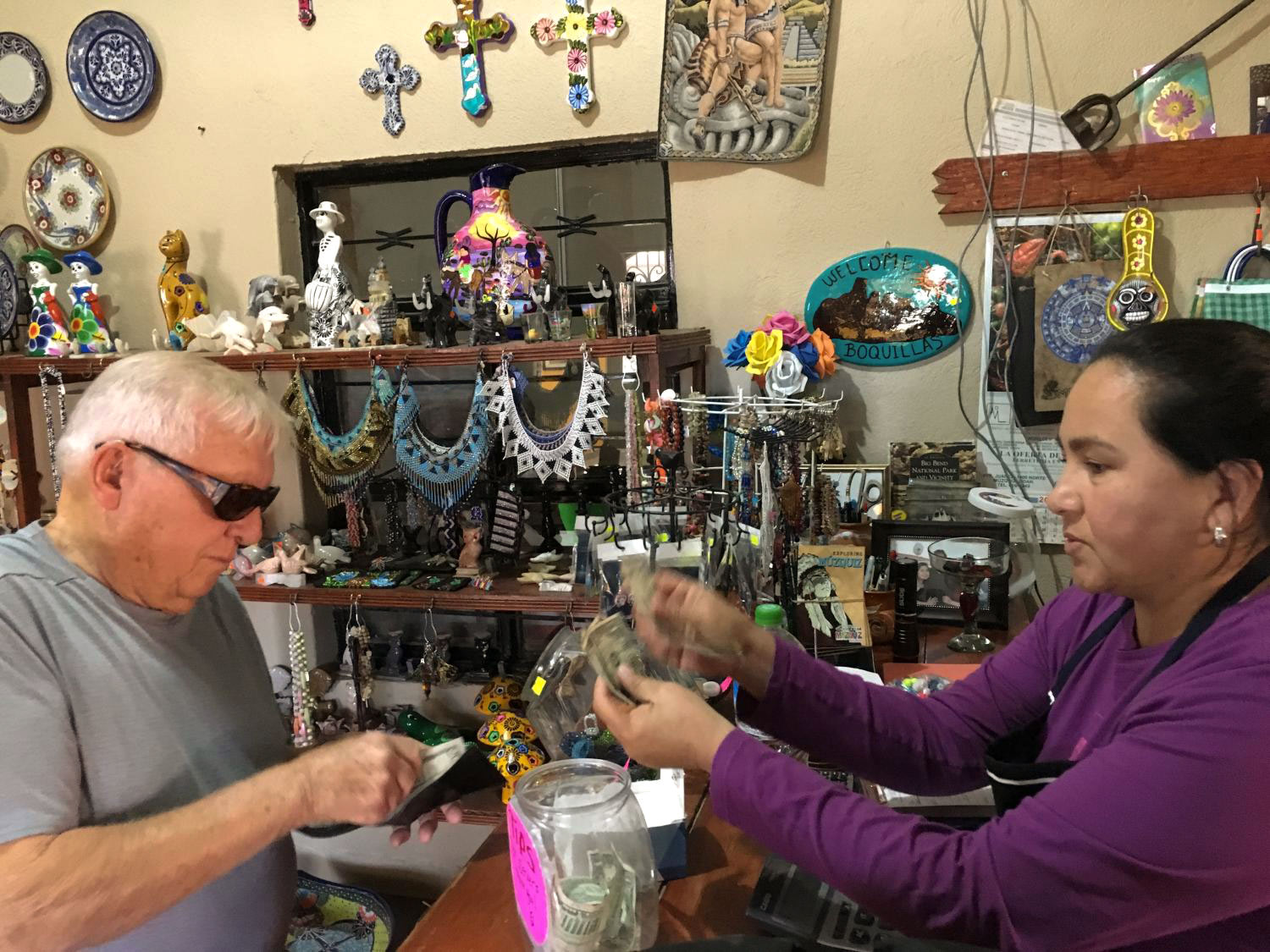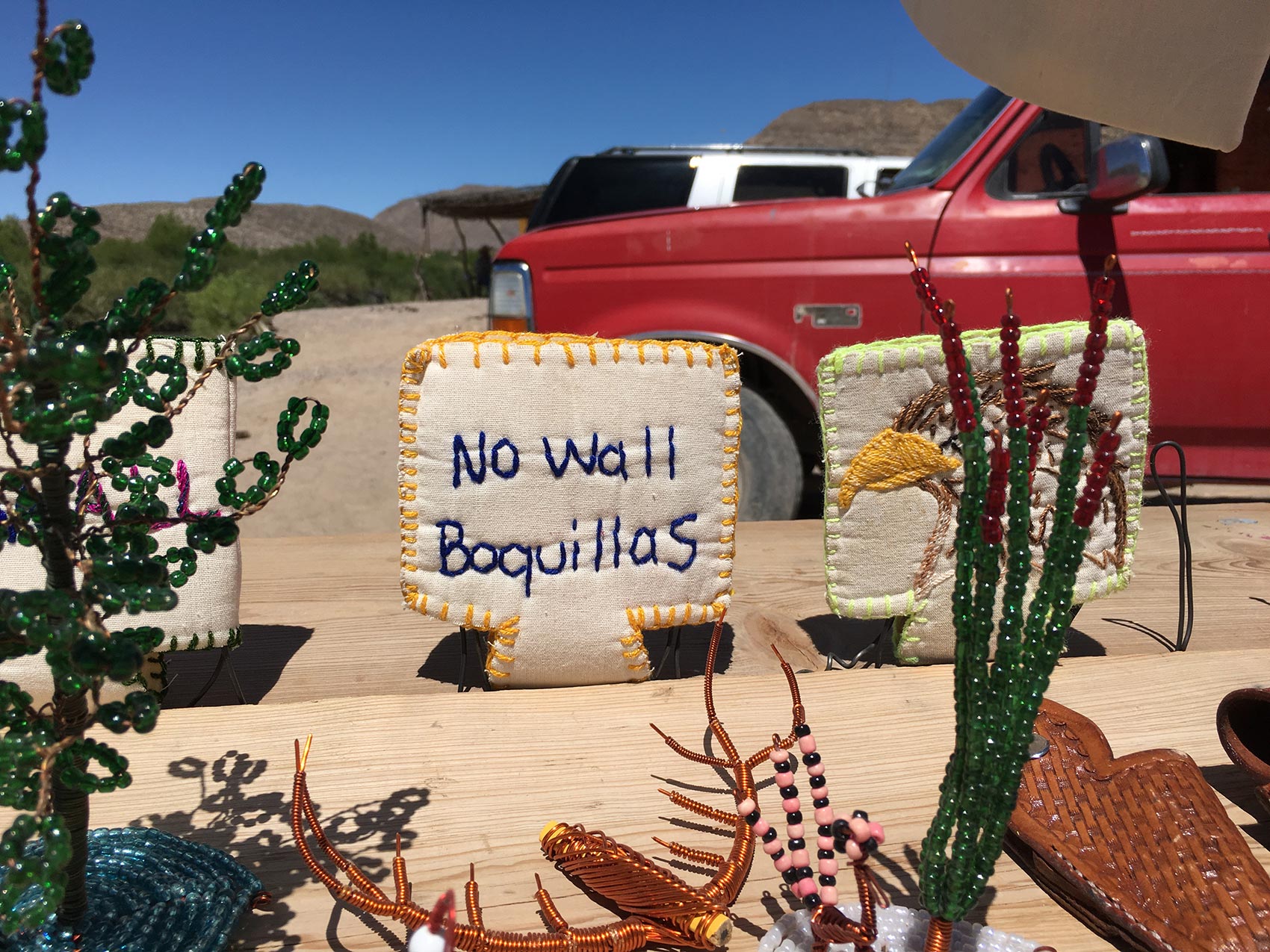 Mike Davidson, at fore of boat, holds the concession permit in the United States to operate the rowboats that ferry people back and forth across the Rio Grande between Boquillas del Carmen, Coahuila and Big Bend National Park.
Mike Davidson, at fore of boat, holds the concession permit in the United States to operate the rowboats that ferry people back and forth across the Rio Grande between Boquillas del Carmen, Coahuila and Big Bend National Park.
This is Part IV in a special four-part Fronteras Desk series about the U.S.-Mexico border and the challenges border residents and U.S. immigration agencies face as President Donald Trump completes his first 100 days in office.
BOQUILLAS DEL CARMEN, COAHUILA — Of all the lonely stretches along the border’s 1,952 miles between the United States and Mexico, the sandy banks of the Rio Grande on the edge of Big Bend National Park seem to be the least likely place that will ever see a border wall.
At least, that’s what people here keep saying.
First a bit of history.
Big Bend National Park shares a border with Mexico and even a port of entry — sort of.
Here, the armed federal agent watching you in a tiny kiosk at the river’s edge is a National Park Service ranger, not a Customs and Border Protection officer. You call the customs officer on a phone and she watches you on camera to gauge whether you’re lying when she asks you what you did in Mexico and whether you’re bringing anything back.
Then a rowboat crosses the shallow water of the Rio Grande and picks you up to take you the 200 feet to the other side for $5 for a round-trip ticket.
Michael Davidson is a river outfitter and holds the permit to run the U.S. side of the cross-river operation.
"I started taking people on river trips in the late ’70s, and I got out of that business. I tell people, 'Yeah I used to have these 10-day river trips for $1,600 and now I have a one-minute river trip for $5.' So I don’t know what that says about my priorities," Davidson said as he laughed.
And yes, a minute later, you’re standing in Boquillas del Carmen, Coahuila, and making your way to the brightly colored Jose Falcón’s restaurant.
About 400 people routinely use this border crossing since the United States re-opened it in 2013 – mostly tourists, though when fires break out in Big Bend, Boquillas wildland firefighters step in.
The U.S. shuttered this border crossing in 2002.
"We never thought it would open again. Thank God it did," said Lillian Falcón, who now runs her dad’s restaurant. She said the border crossing saved her town.
 VIEW LARGER Lillian Falcón makes change for a customer at her family restaurant in Boquillas del Carmen, Coahuila.
VIEW LARGER Lillian Falcón makes change for a customer at her family restaurant in Boquillas del Carmen, Coahuila. When it closed, Falcón watched her mother pack up all her trinkets that she sold to American tourists and put them away in a room.
"I was really happy to see mom unpack a lot of things that were still good and she could sell them," she said.
Falcón said she worries what Trump's wall, or even an increase in border security, would mean for her town.
"He might need it somewhere else, but here, I can say we have beautiful walls already. And they’re natural, and they’re canyons, and they’re mountains," Falcón said.
Alan White and his wife, Pattie, were down from Austin, Texas, pausing their camping trip at the park to sip margaritas in Boquillas.
"I’m trying to figure out how Trump operates, and him basically saying, ‘We’re going to build a wall,’ if that is what is the catalyst to start the debate so people start getting serious about trying to come up with some solutions for immigration, then great. I’m all for that," White said.
Both voted for Trump but not for his proposed border wall.
 VIEW LARGER Mexican vendors sell artwork like this beer-holder opposing the wall in Boquillas del Carmen, Coahuila.
VIEW LARGER Mexican vendors sell artwork like this beer-holder opposing the wall in Boquillas del Carmen, Coahuila. "I have no qualms with anybody coming over as long as it’s legal. The wall? I think yesterday I heard it’s going to be $91 billion, but that seems like a low number to me," Pattie White said.
The National Park Service is equally skeptical about whether a wall would go up in Big Bend or where it would even go.
"That’s the million-dollar question indeed," said park spokeswoman Jeanette Jurado. "At Big Bend, we have not been given any specific plans for a wall in this area yet."
Jurado said Big Bend National Park, created under Franklin Roosevelt to mark its ties with Mexico, is among the quietest stretches of Southwest border.
"Most of the trafficking that does come across here is somebody crossing over, say, in Boquillas Canyon to try and sell a trinket to a tourist," she said.
Federal land officials along the border, like at Organ Pipe Cactus National Monument in Arizona, have asked the Homeland Security Department for help with border security during more chaotic years in the early 2000s.
That has led to vehicle barriers and security screens along Arizona’s border with Mexico. Big Bend hasn’t asked for that kind of help, Jurado said.
And based on the lack of specifics for Trump's proposed wall, including how it would be paid for, it's not clear whether they would even need it.


By submitting your comments, you hereby give AZPM the right to post your comments and potentially use them in any other form of media operated by this institution.